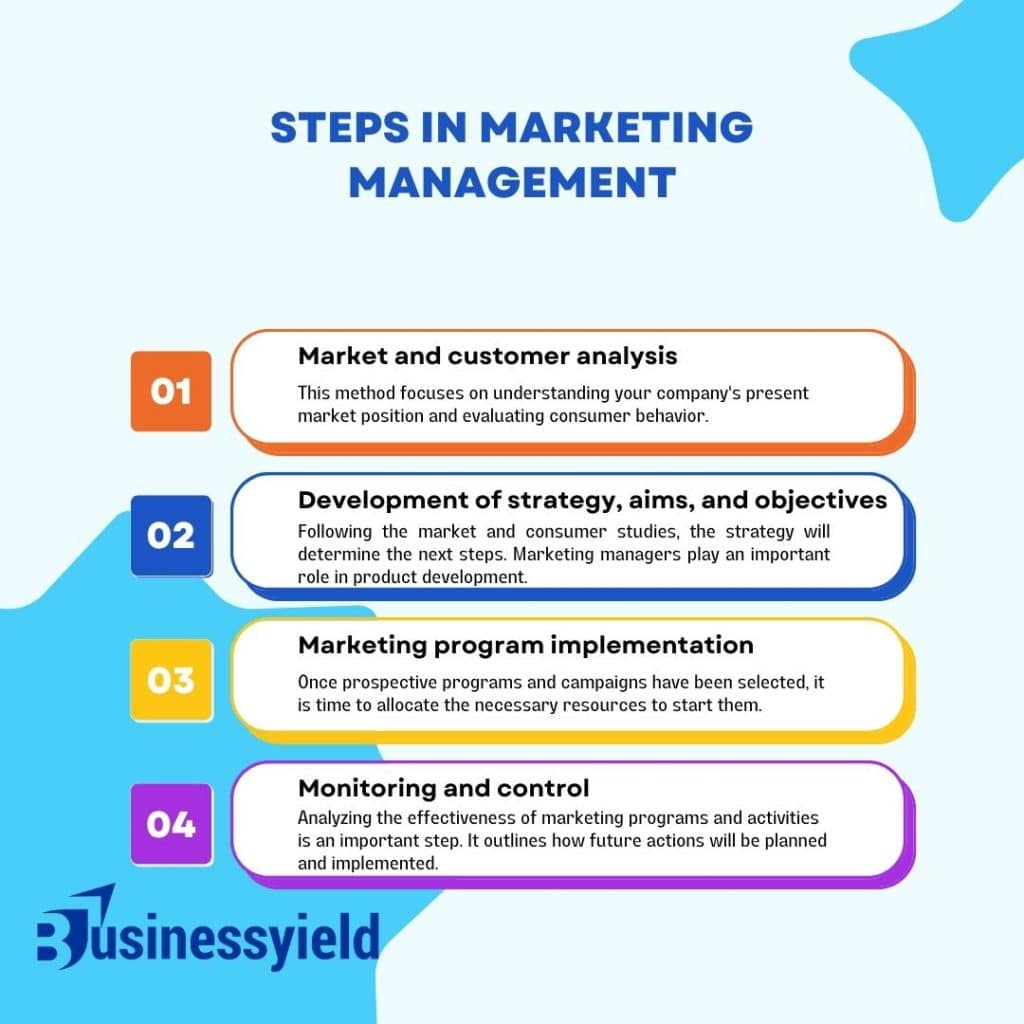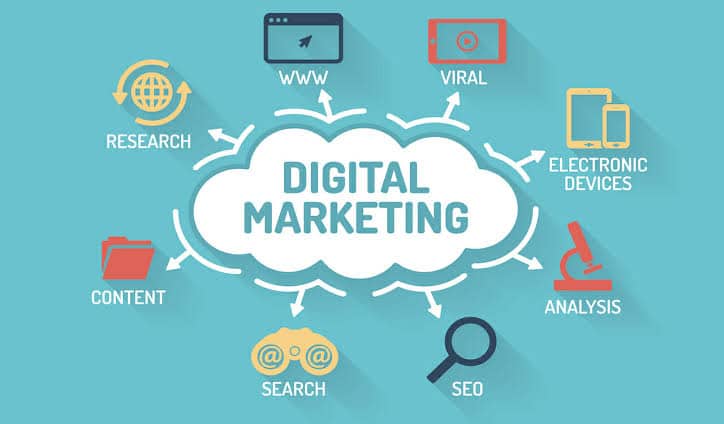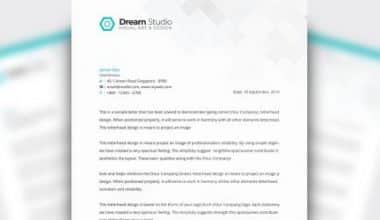Marketers trying to develop the best digital marketing strategy must first understand their business, product, and demographics before selecting one that will work for them.
In our research, ‘The Marketing Evolution: Leadership, Transformation, Skills, Challenges, and the Future,’ we discovered that 53% of senior marketers are spending significantly more on digital marketing channels, while many report a lack of talent to compete in a demanding customer environment, highlighting the importance of a well-planned strategy to guide activities. This is becoming increasingly visible when AI is used in digital marketing.
Here’s a thorough guide to help you enhance consumer interaction, raise brand awareness, and create leads to promote business success through an effective digital marketing strategy.
What is a Digital Marketing Strategy?
A digital marketing strategy is a plan or framework that businesses use to promote their products or services online. It involves leveraging various digital channels and tactics to reach and engage with the target audience, build brand awareness, drive website traffic, generate leads, and ultimately achieve business goals.
Key Takeaways
- Marketers must understand their business, product, and target demographics thoroughly to develop an effective digital marketing strategy that caters specifically to their needs.
- Having a well-defined digital marketing strategy is essential for increased visibility, targeted marketing, brand building, cost-effectiveness, customer engagement, and competitive advantage.
- Compared to traditional marketing methods, digital marketing offers more cost-effective ways to allocate budgets efficiently and focus on channels with the highest ROI.
- Key elements such as SEO, content marketing, social media, email marketing, PPC, influencer marketing, website optimization, and analytics are crucial for a comprehensive digital marketing strategy.
- Businesses can measure the success of their digital marketing efforts through various methods like website analytics, conversion tracking, and social media metrics, enabling data-driven optimizations for better performance.
The Importance of a Digital Marketing Strategy
Having a well-defined digital marketing strategy is crucial for individuals and businesses alike. Here are some reasons why it is important to have a digital marketing strategy:
- Increased Visibility
- Targeted Marketing
- Brand Building
- Cost-Effectiveness
- Customer Engagement
- Competitive Advantage
#1. Increased Visibility
A digital marketing strategy can help increase online visibility and reach a wider audience. By utilizing various digital channels, such as search engines, social media platforms, and email marketing, you can ensure that your message reaches the right people at the right time.
#2. Targeted Marketing
With a digital marketing strategy, you can target specific demographics, interests, and behaviors of your audience. This can allow you to create personalized and relevant content that resonates with your target market, increasing the chances of engagement and conversion.
#3. Brand Building

A digital marketing strategy enables you to build and strengthen your brand presence online. By consistently delivering valuable content, engaging with your audience, and maintaining a cohesive brand image across different digital platforms, you can establish yourself as an authority in your industry and gain the trust and loyalty of the audience.
#4. Cost-Effectiveness
Compared to traditional marketing methods, digital marketing is often more cost-effective. With a well-planned strategy, you can allocate your budget efficiently and focus on the digital channels that provide the highest return on investment (ROI). Additionally, digital marketing allows for better tracking and measurement of results, enabling you to optimize campaigns and make data-driven decisions.
#5. Customer Engagement

Digital marketing provides various avenues for you to engage with the audience and build meaningful relationships. Through social media interactions, personalized email campaigns, and interactive content, you can foster a sense of community and loyalty among your customers, leading to repeat business and positive word-of-mouth referrals.
#6. Competitive Advantage
In today’s digital age, having a strong online presence is essential for staying competitive. A digital marketing strategy can help you stay ahead of your competitors by leveraging the latest trends, technologies, and tactics. By continuously monitoring and adapting your strategy, you can ensure that you reach your audience effectively and stay relevant in the ever-evolving digital landscape.
Key Components of Digital Marketing
Here are the key components of digital marketing.
- Search Engine Optimization (SEO)
- Content Marketing
- Social Media Marketing
- Email Marketing
- Pay-Per-Click (PPC) Advertising
- Influencer Marketing
- Website Optimization
- Analytics and Reporting
#1. Search Engine Optimization (SEO)
SEO involves optimizing your website and its content to improve its visibility in search engine results. By implementing SEO techniques such as keyword research, on-page optimization, and link building, you can increase organic traffic to your website and improve its ranking on search engines.
You check out this ultimate checklist below for launching your SEO strategy.
#2. Content Marketing
Content marketing focuses on creating and distributing valuable and relevant content to attract and engage the target audience. By producing high-quality blog posts, videos, infographics, and other forms of content, you can establish yourself as an authority in your industry, drive website traffic, and generate leads.

Social media marketing involves leveraging social media platforms to connect with your audience, build brand awareness, and drive engagement. By creating compelling social media content, interacting with your followers, and running targeted advertising campaigns, you can effectively reach and engage your target audience.
#4. Email Marketing

Email marketing involves sending targeted emails to your subscribers to nurture relationships, promote products or services, and drive conversions. By segmenting your email list, personalizing your messages, and providing valuable content, you can build trust, drive website traffic, and increase sales.
#5. Pay-Per-Click (PPC) Advertising
PPC advertising allows you to display ads on search engines or other websites and pay only when someone clicks on your ad. Platforms like Google Ads and social media advertising networks provide options to target specific demographics, interests, and behaviors, ensuring that your ads reach the right audience.
#6. Influencer Marketing

Influencer marketing involves collaborating with influential individuals in your industry to promote your products or services. By partnering with relevant influencers who have a strong following, you can leverage their credibility and reach to expand your brand’s visibility and attract new customers.
#7. Website Optimization
Optimizing your website involves improving its user experience, load speed, mobile friendliness, and overall performance. A well-optimized website ensures that visitors have a positive experience, encourages them to stay longer, and increases the likelihood of conversions.
#8. Analytics and Reporting

Analytics tools provide insights into the performance of your digital marketing efforts. By tracking key metrics such as website traffic, conversion rates, engagement levels, and ROI, you can measure the effectiveness of your campaigns, identify areas for improvement, and make data-driven decisions.
Step-by-Step Guide to Creating a Digital Marketing Strategy
Creating a digital marketing strategy involves several key steps, including market research, target audience identification, and goal setting.
Here’s a personalized, step-by-step guide:
- Step 1: Define Objectives
- Step 2: Conduct Market Research
- Step 3: Identify Target Audience
- Step 4: Set SMART Goals
- Step 5: Choose the Digital Marketing Channels
- Step 6: Develop Your Content Strategy
- Step 7: Implement and Monitor the Strategy
- Step 8: Analyze and Optimize Your Strategy

Step #1: Define Your Objectives
Before diving into the details, it’s important to clearly define your objectives. What do you want to achieve with your digital marketing efforts? Do you want to increase brand awareness, generate leads, drive website traffic, or boost sales? By setting specific and measurable goals, you can better align your strategy with your overall business objectives.
Step #2: Conduct Market Research
To create an effective digital marketing strategy, you’ll need to understand your target market and the competitive landscape. Conducting market research will provide valuable insights into consumer behavior, industry trends, and competitor strategies. You can gather information through surveys, interviews, online research, and by analyzing industry reports.
Step #3: Identify Your Target Audience
Once you have a clear understanding of the market, it’s time to identify your target audience. Who are your ideal customers? What are their demographics, interests, and pain points? By creating buyer personas, you can tailor your marketing messages and tactics to resonate with your target audience.
Step #4: Set SMART Goals
SMART goals are specific, measurable, attainable, relevant, and time-bound. By setting SMART goals, you can track your progress and evaluate the success of your digital marketing strategy. For example, a SMART goal could be to increase website traffic by 20% within the next three months.
Step #5: Choose Your Digital Marketing Channels
Based on your target audience and objectives, you’ll need to select the most appropriate digital marketing channels to reach your audience effectively. This could include search engine optimization (SEO), social media marketing, email marketing, content marketing, paid advertising, or a combination of these channels.
Step #6: Develop Your Content Strategy
Content is a crucial component of any digital marketing strategy. You need to create valuable and engaging content that resonates with your target audience. This could include blog posts, videos, infographics, case studies, or whitepapers. By developing a content calendar and consistently publishing high-quality content, you can attract and retain your target audience.
Step #7: Implement and Monitor Your Strategy
Once you have defined your objectives, conducted market research, identified your target audience, set SMART goals, chosen your digital marketing channels, and developed your content strategy, it’s time to implement your strategy. You’ll need to execute your marketing tactics, monitor your campaigns, and track key performance indicators (KPIs) to measure your progress.
Step #8: Analyze and Optimize Your Strategy
Digital marketing is an iterative process, and it’s important to continuously analyze and optimize your strategy. By regularly reviewing your analytics data, you can identify what’s working and what’s not. You can make data-driven decisions to refine your tactics, improve your results, and achieve your goals.
Examples of Brands With An Effective Digital Marketing Strategy
#1. Nike’s Digital Marketing Mastery
Nike’s “Dream Crazy” campaign, which featured Colin Kaepernick, used social media, content marketing, and influencer partnerships to generate debate and engagement about the brand’s ideals.
Influencers and brand ambassadors supported the campaign’s use of video content on social media channels to communicate compelling stories.
The campaign produced a lot of social media attention, increased Nike’s sales by 31%, and improved brand visibility and consumer perception.
#2. Airbnb’s SEO and Content Strategy Turnaround
Airbnb worked on strengthening its SEO strategy by keyword-optimizing listings and generating useful material for travelers, such as city guides and host recommendations.
They created a thorough blog and resources area for their website, focusing on long-tail travel-related keywords and offering true value to both guests and hosts.
Airbnb experienced considerable growth in organic search rankings, website traffic, and, ultimately, bookings. Their content marketing activities increased brand loyalty and user engagement.
These stories and case studies demonstrate the revolutionary impact of digital marketing when properly planned and executed. They demonstrate that, regardless of the size of the firm or industry, considerable commercial growth and success can be achieved with the correct digital marketing strategy.
Crafting Compelling Content and Engaging Messaging
In the digital realm, content is king. Whether it’s a blog post, a video, or an infographic, crafting compelling content that resonates with your audience is the key to winning their hearts and minds. These are personalized tips to help you create content that resonates with your target audience:
- Understand the Audience
- Tell a Story
- Use Compelling Headlines
- Focus on Benefits
- Use Emotion
- Be Clear and Concise
- Include Visuals
- Engage in Conversations
- Use Calls-to-Action
- Test and Iterate
#1. Understand the Audience
To create content that connects with the audience, you need to have a deep understanding of their needs, interests, and pain points. By conducting market research and creating buyer personas, you can tailor your messaging to address their specific challenges and aspirations.
#2. Tell a Story
Sharing a unique story and perspective can help you stand out from the competition. By weaving personal anecdotes and experiences into your content, you can create a relatable and authentic connection with your audience.
#3. Use Compelling Headlines
The headline is the first thing that grabs the audience’s attention. Crafting attention-grabbing and compelling headlines is crucial to encouraging them to click and read more. You can experiment with different headline styles, such as posing questions, offering solutions, or creating a sense of urgency.
#4. Focus on Benefits
Instead of solely focusing on features or specifications, you should emphasize the benefits your audience will gain from your product or service. By highlighting how your offering can solve their problems or improve their lives, you can create a strong desire to engage with your content.
#5. Use Emotions
Emotion is a powerful tool to engage your audience. By appealing to their emotions, you can create a deeper connection and motivate them to take action. Whether it’s through storytelling, evoking empathy, or using humor, you can tap into emotions that resonate with your target audience.
#6. Be Clear and Concise
In a world of information overload, it’s important to deliver the message clearly and concisely. Avoid jargon, unnecessary complexity, or long-winded explanations. Instead, focus on delivering value in a straightforward and easily understandable way.
#7. Include Visuals
Visual content can significantly enhance the impact of messaging. Incorporate relevant images, videos, infographics, or other visual elements to make your content more visually appealing and memorable.
#8. Engage in Conversations
Encourage interaction and conversation with your audience. Respond to comments, ask questions, and create opportunities for them to share their thoughts and experiences. This not only helps build a sense of community but also provides valuable insights for future content creation.
#9. Use Calls-to-Action
Guide your audience on the next steps they should take after engaging with your content. Whether it’s subscribing to a newsletter, downloading a resource, or making a purchase, clear and compelling calls to action can drive conversions and engagement.
#10. Test and Iterate
Don’t be afraid to experiment and test different approaches. Analyze the performance of your content, gather feedback, and make data-driven decisions to optimize your messaging. Continuously iterate and refine your content strategy to better connect with your audience over time.
Best Tools for an Effective Digital Marketing Strategy
Successful digital marketing relies heavily on the right tools. Here are some that I personally use and recommend:
#1. Google Analytics
- Why I Prefer It: Offers in-depth insights into website traffic, user behavior, and conversion data.
- Impact: It helps me understand which marketing efforts are paying off by tracking user interactions and conversion rates.
#2. SEMrush
- Why I Prefer It: It is a comprehensive SEO tool that provides keyword research, site audits, competitor analysis, and more.
- Impact: Enhances my SEO strategy by identifying valuable keywords, monitoring my site’s health, and spying on competitors’ strategies.
#3. Canva
- Why I Prefer It: A user-friendly graphic design tool with templates for social media posts, ads, flyers, and more.
- Impact: It allows me to quickly create professional-looking visuals for my campaigns without needing a designer.
#4. Mailchimp
- Why I Prefer It: An all-in-one email marketing platform that’s great for managing email lists, campaigns, and automation.
- Impact: Streamlines my email marketing efforts, making it easy to engage with my audience and track the performance of my emails.
#5. Hootsuite
- Why I Prefer It: Social media management tool that lets you schedule posts, monitor conversations, and measure performance across multiple platforms.
- Impact: Saves time by managing all my social media profiles in one place and provides valuable insights into my social media strategy’s effectiveness.
#6. BuzzSumo
- Why I Prefer It: Content research tool that helps you find trending topics, popular content, and key influencers in your niche.
- Impact: Informs my content strategy by highlighting what content resonates with my target audience and where to focus my efforts.
Incorporating these tools into your digital marketing strategy can significantly enhance your efficiency, effectiveness, and ability to make informed decisions. Each offers unique benefits that can help you achieve your marketing goals and improve your overall marketing efforts.
The Power of Blogging in Digital Marketing
In the vast realm of digital marketing, there’s one tool that has consistently proven its worth: blogging. When it comes to lead generation, blogging is the ultimate weapon in my digital marketing arsenal. Statistics show that businesses that blog consistently generate 67% more leads than those that don’t. By crafting informative, engaging, and valuable content, you can capture the attention of my target audience, establish my expertise, and drive them further down the sales funnel.
Social media is the heartbeat of the digital world. With billions of users worldwide, platforms like Facebook, Instagram, and Twitter have become the go-to hotspots for marketers. By harnessing the power of engaging content, leveraging influencer partnerships, and staying on top of emerging trends, you can create a social media strategy that not only captivates my audience but also drives tangible results.
What is the Significance of Having a Digital Marketing Strategy in 2024?
Having a digital marketing strategy in 2024 is crucial for businesses due to several reasons. It allows businesses to establish a strong online presence, target their audience effectively, gain a competitive advantage, make data-driven decisions, adapt to changing consumer behavior, maximize ROI, build trust and loyalty, and integrate with offline marketing efforts. Overall, a digital marketing strategy helps businesses thrive in the digital age and achieve their business goals.
Social media plays a crucial role in digital marketing by offering a wide reach, targeted advertising options, opportunities for brand awareness and engagement, customer insights, influencer marketing, customer support and reputation management, user-generated content, and viral marketing potential. It allows businesses to connect with a large and diverse audience, deliver personalized content, gather valuable data, and build a strong brand presence.
Do I Need a Blog for My Digital Marketing Strategy?
Having a blog can be beneficial for your digital marketing strategy, but it is not a requirement for every business. A blog can help with content marketing, search engine optimization (SEO), lead generation, thought leadership, and social media/email marketing. However, maintaining a blog requires time and effort, so it’s important to consider your resources and target audience before deciding to have one.
How Can Businesses Measure the Effectiveness of Their Digital Marketing Efforts?
Businesses can measure the effectiveness of their digital marketing efforts through various methods. These include analyzing website analytics, tracking conversions, monitoring social media metrics, evaluating email marketing metrics, tracking search engine rankings, measuring customer lifetime value (CLV), and calculating return on investment (ROI). Defining goals and key performance indicators (KPIs) is important to align measurement strategies with specific objectives. By utilizing these methods, businesses can make data-driven decisions to optimize their digital marketing strategies.
Conclusion
The bottom line for any digital marketing strategy or tactic is to keep focused on your primary purpose, not just your product. Focus on the benefits; address the customer’s true wants; and understand what makes them tick.
You should also keep track of how social developments affect different populations (for example, the global economic crisis). Remember, it is your responsibility to ‘follow’ the consumer, not the other way around.
- THINKING ABOUT LAUNCHING A PODCAST? – Everything You Need to Know
- DIGITAL CONTENT: Meaning, Strategy, Management and Marketing
- Best Strategies for Promoting Mobile Games
- Digital Marketing for Small Businesses: How to Do It Rightly 2024
- MARKETING STRATEGY: What It Is and How to Create One






